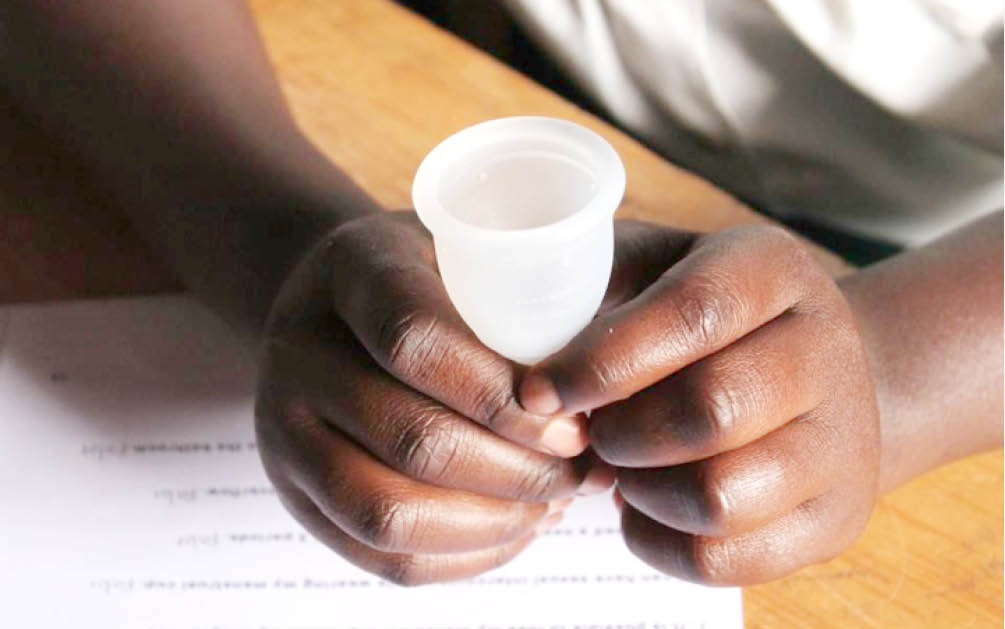Pads, tampons…cups? Makes no difference
From the onset of puberty, every woman goes through a battle once a month—deciding what to do and how to manage her menstrual hygiene. Cloth or cotton pad, tampons…or menstrual cup? Now a review of menstrual cups published in the journal Lancet Public Health suggests they are safe and may be as effective as other […]

From the onset of puberty, every woman goes through a battle once a month—deciding what to do and how to manage her menstrual hygiene. Cloth or cotton pad, tampons…or menstrual cup?
Now a review of menstrual cups published in the journal Lancet Public Health suggests they are safe and may be as effective as other sanitary products, resulting in similar or lower leakage than disposable pads or tampons.
Seven in 10 women who ever tried and got familiar with using a menstrual cup wanted to continue. but practice, peer support and training are barriers to the first start.
Around 199 brands of menstrual cups are on the market, and they are available in 99 countries.
Evidence already suggest menstrual cups are cheap and contribute to cutting waste. But awareness is low. Menstrual cups are mentioned in only 21 of 69 websites containing educational materials on puberty from 27 countries.
The review covers 43 studies and data from 3,300 women and girls.
Globally, menstruation can affect girls’ schooling and women’s experience of work, increase their disposition to urogenital infections if they use poor quality sanitary products, and even make both women and girls a target of sexual violence or coercion when they don’t have the funds to buy them.
There are an increasing number of initiatives in both high- and low-income countries to combat ‘period poverty’, so it is essential that policy makers know which sanitary products to include in menstrual health programmes and puberty education materials.
“Despite the fact that 1.9 billion women globally are of menstruating age – spending on average 65 days a year dealing with menstrual blood flow, few good quality studies exist that compare sanitary products,” says senior author Professor Penelope Phillips-Howard from the Liverpool School of Tropical Medicine, UK.
“We aimed to address this by summarising current knowledge about leakage, safety, and acceptability of menstrual cups, comparing them to other products where possible.”
Menstrual cups collect blood flow, rather than absorbing it as with pads and tampons. Like tampons, they are inserted into the vagina, before being emptied every 4-12 hours.
There are currently two types: a vaginal cup which is generally bell-shaped, and a cervical cup which is placed around the cervix high in the vagina like a diaphragm for contraception.
The materials used to make them are medical grade silicone, rubber, latex or elastomer and can last up to 10 years.
The current review identifies the products usually used in LMICs, which include cloths, cotton wool, tissue paper and other pieces of material, as well as disposable pads. Leakage and chaffing are a common concern.
Four studies in the review, involving 293 participants, made direct comparisons of leakage between menstrual cups and disposable pads or tampons.
Leakage was similar in three studies and significantly less among menstrual cups for one study.
In some studies, leaking was associated with abnormally heavy bleeding, unusual anatomy of the uterus, need of a larger cup size, incorrect placement of the cup, and the cup becoming full.
There was no increased risk of infection associated with using menstrual cups among European, North American, and African women and girls.
There were five reported cases of toxic shock syndrome following their use, but the overall number of menstrual cup users is unknown, so it is not possible to make comparisons of the risk of toxic shock syndrome between menstrual cups and other products.
In four studies involving a total of 507 women, use of the menstrual cup showed no adverse effects on vaginal flora. In studies that examined the vagina and cervix during follow-up, no tissue damage was identified from use of a menstrual cup.
Difficulty in removing cups, requiring professional assistance, was reported twice for vaginal cups and 47 times for cervical cups.
Some women use them in combination with intrauterine devices and, in 13 cases, removing the cup was associated with an IUD becoming dislodged.
They suggest that the combination of an IUD and use of a menstrual cup might need further study.
